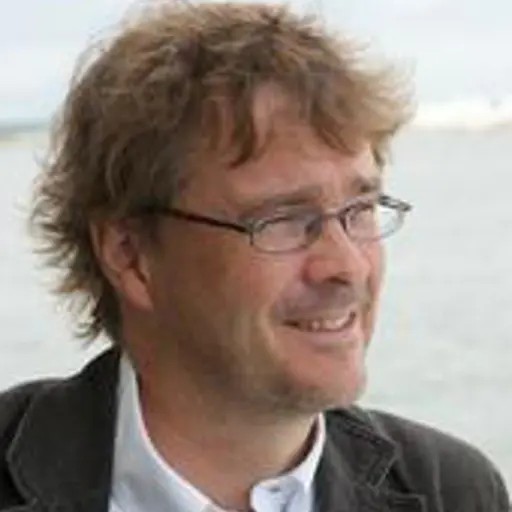We grapple with the challenges posed by non-linear dynamical systems and emergence – theoretically, in natural, technological, and social systems.

While mathematical modeling is at the core of complexity science, computer simulation deserves special mention since even if it is not used, it is rarely far off. Indeed, the field itself emerged as if by pent-up demand when personal computers became widely available in the 1980’s, making it possible for individual scientists to simulate all those dynamical systems that are easy to render in terms of how their parts interact, but for which it is impossible to even begin conceiving of regular experiments or mathematical modeling.
For example, birds flocks meet this description. We may of course observe real flocks, but how do we observe what all those birds do as they fly about? How does what they do lead to that larger pattern that we call a flock? Simulation here allows us to pose and test hypotheses about a general type of question: How do microlevel properties dynamically result in macroscopic patterns?
It was actually only by simulating bird flocks that even an outline of a working explanation for how they behave could be conceived – and the same is true in many other similar situations. Contrary to intuition, the bird flock has no leader. Nobody tells the birds how to behave. The birds all make their choices on the basis of perceptions of their own internal states and their local surroundings. We say that it self-organizes from the bottom-up, and that the macroscopic phenomenon of a bird flock is emergent. That the bird flock is emergent means that it has properties that its constituent birds do not partake in. For example, the bird flock may confuse birds of prey, which individual birds do not. They do this only as a whole.
Chaos is another reason why complex systems are hard to understand. We may express this roughly as follows. Imagine that we initiate the simulation of two bird flocks that are identical except for a very small change in the location of one of the birds. Right at the beginning, the difference remains small, but as the simulated birds interact, the deviation will propagate and mount so that, very soon, the flocks will look completely different. Note that they will still be qualitatively similar, akin to how two clouds are never alike in detail, yet recognizably clouds within the range of feasible appearances of clouds. Chaos thereby becomes a problem specifically when we need to predict a system in detail.
Complex systems research has a core of theoretical tools and concepts, many of which are derived from for example dynamical systems theory, chaos theory, systems theory, and so on. Like these fields, and indeed like mathematics in general, complex systems theory is, however, applicable to just about any field of study. Complex systems are almost everywhere. In physics, biology, chemistry, geography, sociology, and so on. Many of the tools are useful throughout, and, in many cases, insights about complex dynamics in one field can be carried over to another field, as inspiration for how to solve problems there. There are useful similarities between bunches of people, bunches of amoeba, and bunches of molecules.
Information theory for complex system
Information theory provides a theoretical basis for describing and understanding phenomena ranging from emergent laws of physics, including the second law of thermodynamics, to emergent structures in, for example, chemical self-organizing systems. A current focus is on physical systems including both statistical mechanics and the process of quantum measurement.
The origin and evolution of humans and human culture.
The theoretical lens of Major Evolutionary Transitions offers a radical new take on the origin and evolution of the genus Homo and her unique cumulative cultural societies. We are collaborating with world-leading evolutionary biologists and anthropologists to explore the “social protocell model” (and related subjects) as a hypothetical mechanism for initiating a process of cumulative cultural evolution. The social protocell resembles the biotic protocell model of the origin of cellular life and involves a complex evolutionary trajectory where lower-level units (here traditional individual knowledge) become integrated into a new higher-level evolutionary individual in its own right (a cultural community with a system of cultural functions.)
Stability of large complex ecosystems
An ecosystem is a complex system consisting of many heterogeneous agents (species or individuals). The long- and short-term stability and robustness of these systems have been studied and discussed extensively in the literature for more than 50 years but is still far from fully understood. A fundamental problem is how the complexity of the system, measured in terms of number of species or strength and topology of interactions among species affect its stability. Despite how important this is for understanding and predicting possible catastrophic biodiversity loss etc, this is still not well understood. The complex systems group has recently started a project that tries to address such questions using dynamical systems theory. The work is done in collaboration with complex systems and theoretical biology group at UCLA in Los Angeles.
Senior researchers
Key publications
Kristian Lindgren, Eckehard Olbrich. The approach towards equilibrium in a reversible Ising dynamics model: An information-theoretic analysis based on an exact solution, Journal of Statistical Physics 168(4), 919-935 (2017).
Torbjørn Helvik and K. Lindgren. Expressing the Entropy of Lattice Systems as Sums of Conditional Entropies. Journal of Statistical Physics, (2014).
Karl-Erik Eriksson, Kristian Lindgren. Giving quantum mechanics a chance, arXiv:1901.01035 [quant-ph] (2019).
Andersson, C., & Czárán, T. (2022). The transition from animal to human culture – simulating the social protocell hypothesis. Proceedings of the Royal Society B - Biological Sciences, In press.
Davison, D. R., Andersson, C., Michod, R. E., & Kuhn, S. L. (2021). Did human culture emerge in a cultural Evolutionary Transition in Individuality? Biological Theory, 16, 213–236.
Hellervik, A., Nilsson, L., & Andersson, C. (2019). Preferential centrality - a new measure unifying urban activity, attraction and accessibility. Environment and Planning B, 46(May), 1–32.
Andersson, C., & Read, D. (2016). The Evolution of Cultural Complexity: Not by the Treadmill Alone. Current Anthropology, 57(3), 261–286.
Andersson, C., Törnberg, A., & Törnberg, P. (2014). An Evolutionary Developmental Approach to Cultural Evolution. Current Anthropology, 55(2), 154–174.
Andersson, C., Törnberg, A., & Törnberg, P. (2014). Societal systems: complex or worse? Futures, 63, 145–157.


